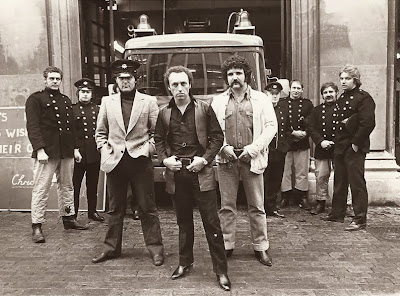 |
Source: Nora Duckett and Helen Spandel, Radically seeking social justice for children and survivors of abuse, Critical and Radical Social Work, 2018 |
One of the groups that operated from the bookshop was Luton Women's Action Group. Some of their material has been deposited in Bedfordshire Archives who have written this summary of the group:
'The Luton Women's Action Group held their first meeting in June 1974. At that time the partner of Liz Durkin (now Dr Liz Davies), one of the group's founder members, ran a non-profit political bookshop, Partisan Books, in Dallow Road. This book shop became the centre for lots of groups, including the Women's Action Group and the Luton Street Press.
The Women's Action Group had about 8 women at the core and others that came and went over time. The group was very inclusive and as well as women they had male supporters, including Andrew Tyndall of the Luton News who wrote a number of pieces relating to their campaigns.
The group campaigned for various women's rights and also for nurseries and an adventure playground for children. They believed in direct action and took action, for example, against advertisements that they found offensive. Other activities included writing anti-sexist stories for children and running a women's study course at Luton College. Members of the group attended national conferences and meetings.
In 1976 Liz and her husband moved back to London and the shop in Dallow Road closed. Some of the group's activities carried on for a little while after this and some of the members continued to be active in campaigning for women's rights but the group had ceased to be active by about 1977. The two former members who were responsible for depositing material with Bedfordshire Archives remember being part of the organisation as very exciting and energising. Although the group was only active for a relatively short period it was an important period for the women's liberation movement'.
 |
| Source: Libertarian Struggle, July/August 1975 |
.jpg) |
| A 1975 jumble sale for Partisan Community Bookshop |
 | |||
| Source: Jon Hochschartner (2017), The Animals' Freedom Fighter: a biography of Ronnie Lee . |
 |
| Undercurrents, June/July 1976 |
 |
| This 1987 Luton News report of Ronnie Lee being jailed for ten years in relation to ALF activities mentions the earlier Luton campaign in his support in 1975 with meetings 'at a bookshop in Dallow Road and at the Recreation Centre in Old Bedford Road' as well as 'youngsters in the Dallow Road area' planning a sponsored swim to raise funds. (as an aside there's an interesting 2023 interview with Lee at DIY conspiracy where he talks about being in an animal liberation punk band Total Assault and about the influence of the Situationists and the Angry Brigade on him. He also recalls being in an ALF group who would play The Flamin Groovies 'Shake Some Action' before going on a raid) |














































